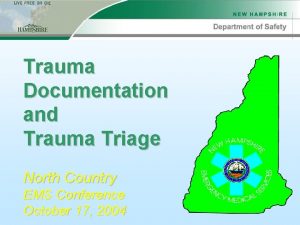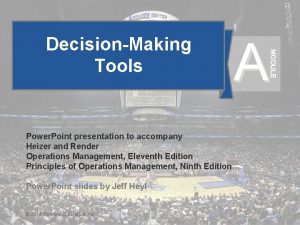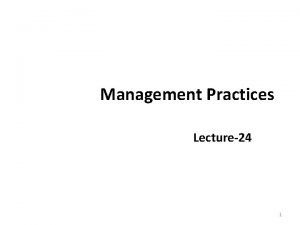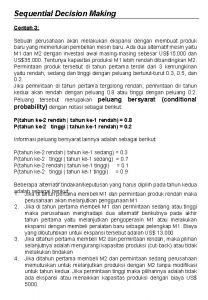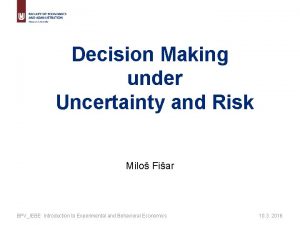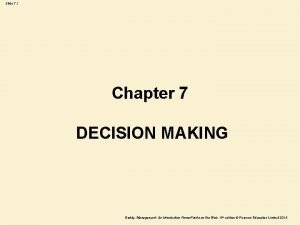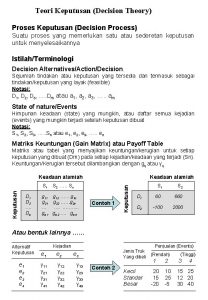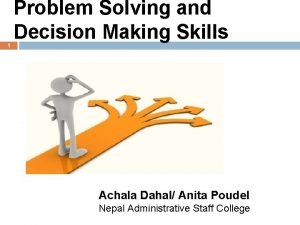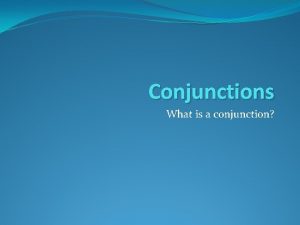T 4 Decision making in Trauma In conjunction

















- Slides: 17

T 4 – Decision making in Trauma In conjunction with the remote simulation program simulation session Module T 4 This project was possible due to funding made available by Health Workforce Australia

Sponsor This project was possible due to funding made available by Projects within NSW are overseen by the NSW Ministry of Health on behalf of HWA November 20 © Health Workforce Australia

Introductions November 20 © Health Workforce Australia

General Aims • Learn in a team setting • Blend clinical skills with team skills • Reflect critically on practice November 20 © Health Workforce Australia

Ground Rules • • • November 20 Participation Privacy Confidentiality Disclaimer Debriefing Mobile phones © Health Workforce Australia

Decision Making in Trauma Module: T 4 – Decision making in Trauma August 13 © Health Workforce Australia

Session Objectives § Discuss some common trauma scenarios and discuss approaches to problem solving § Explore decision making pathways and clinical guidelines § Role of teamwork in effective trauma management November 20 © Health Workforce Australia

7 Non-Technical Team Tasks § § § § Plan and prepare Assemble the correct team Manage resources Manage people Provide leadership/followership and support Monitor and evaluate Communicate effectively November 20 (C) Health Workforce Australia

Scenario § Clive James, 87 -year-old nursing home resident. Fall from bed, found on the floor of his room, unwitnessed events. History of dementia Now unable to mobilise. November 20 © Health Workforce Australia

CERVICAL SPINE CLEARANCE § NEXUS § Canadian Cervical Spine Rules § Local Guidelines November 20 © Health Workforce Australia

http: //www. mdcalc. com/nexus-criteria-for-c-spine-imaging/ November 20 © Health Workforce Australia

www. health. vic. gov. au/pdf_file/ 0005/355982/canadiancspinerule. pdf November 20 © Health Workforce Australia

Scenario § Frank Sinatra § 56 year-old man, rear-ended in his car at low speed. He complained of some neck pain while discussing the incidence with the other driver. November 20 © Health Workforce Australia

Scenario § George Calombaris, 18 year old boy § Brought in by parents, after fall from skateboard with loss of consciousness. November 20 © Health Workforce Australia

References § Hoffman, J. R. , W. R. Mower, A. B. Wolfson, K. H. Todd & M. I. Zucker. (2000). Validity of a set of clinical criteria to rule out injury to the cervical spine in patients with blunt trauma. National Emergency X-Radiography Utilization Study Group. The New England Journal of Medicine 343, 94 -99. CCS § Stiell, I. G. , G. A. Wells, K. L. Vandemheen, C. M. Clement, H. Lesiuk, V. J. De Maio, A. Laupacis, et al. (2001). The Canadian C-spine rule for radiography in alert and stable trauma patients. JAMA : The Journal of the American Medical Association 286, 1841 -1848. § Initial Management of Closed Head Injury in Adults, 2 nd edition http: //www. itim. nsw. gov. au § Stiell IG, Wells GA, Vandemheen K, Clement C, Lesiuk H, Laupacis A, et al. The Canadian CT Head Rule for patients with minor head injury. Lancet 2001; 357(9266): 1391 -6. November 20 © Health Workforce Australia

Acknowledgments Topic expert author: John Vassiliadis Simulation Author: Morgan Sherwood Educational consultants: Stephanie O’Regan, Nurse Educator SCSSC Leonie Watterson, Director Simulation Division SCSSC John Vassiliadis, FACEM, Deputy Director SCSSC, Royal North Shore Hospital Clare Richmond FACEM Morgan Sherwood FRCA, Simulation Fellow SCSSC November 20 © Health Workforce Australia

Disclaimer Care has been taken to confirm the accuracy of the information presented and to describe generally accepted practices. However the authors, editor and publisher are not responsible for errors or omissions or for any consequences from the application of the information in this presentation and make no warranty, express or implied, with respect to the contents of the presentation. Copyright and Permission to Reproduce This work is copyright. It may be reproduced for study or training purposes subject to the inclusion of an acknowledgement of the source: Health Workforce Australia Ed. WISE program. It may not be reproduced for commercial usage or sale. November 20 © Health Workforce Australia
 Investment decision financing decision dividend decision
Investment decision financing decision dividend decision Objectives of decision making
Objectives of decision making Meaning of subordinating conjunction
Meaning of subordinating conjunction Miemss trauma decision tree
Miemss trauma decision tree Decision tree and decision table
Decision tree and decision table Supply chain decision making framework
Supply chain decision making framework Kerridge's decision making model
Kerridge's decision making model What doing our country
What doing our country Diagram keputusan adalah
Diagram keputusan adalah Decision making tools in management ppt
Decision making tools in management ppt Decision making and relevant information
Decision making and relevant information Approaches to decision making
Approaches to decision making Contoh soal decision making
Contoh soal decision making Decision-making under uncertainty
Decision-making under uncertainty Conditions of decision making
Conditions of decision making Contoh soal decision tree
Contoh soal decision tree Six c's of decision making
Six c's of decision making Kevin bossuet
Kevin bossuet



